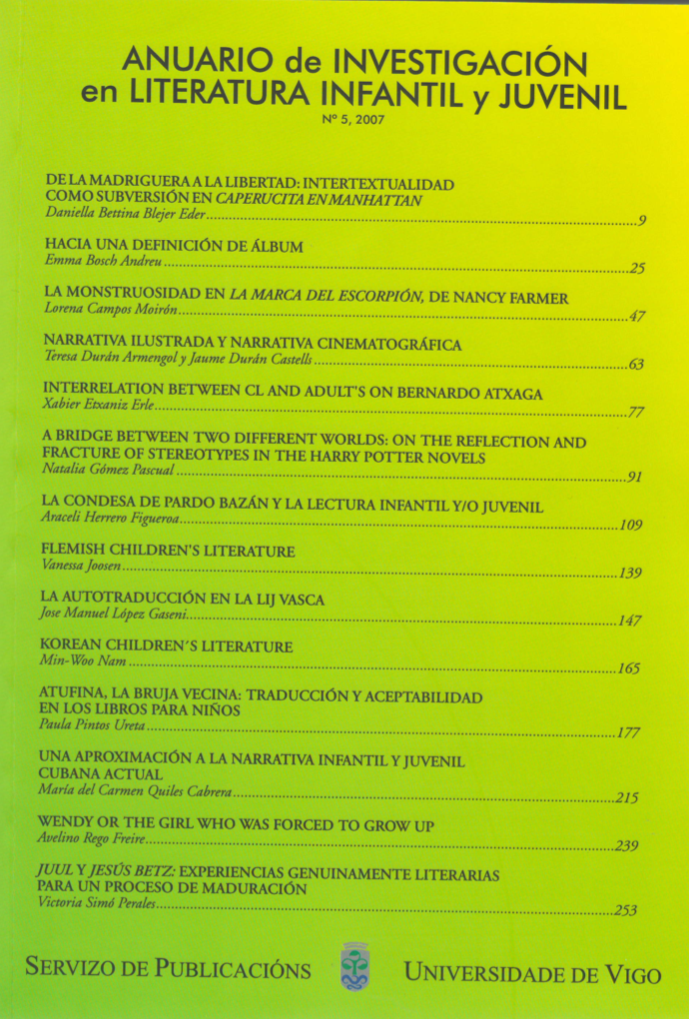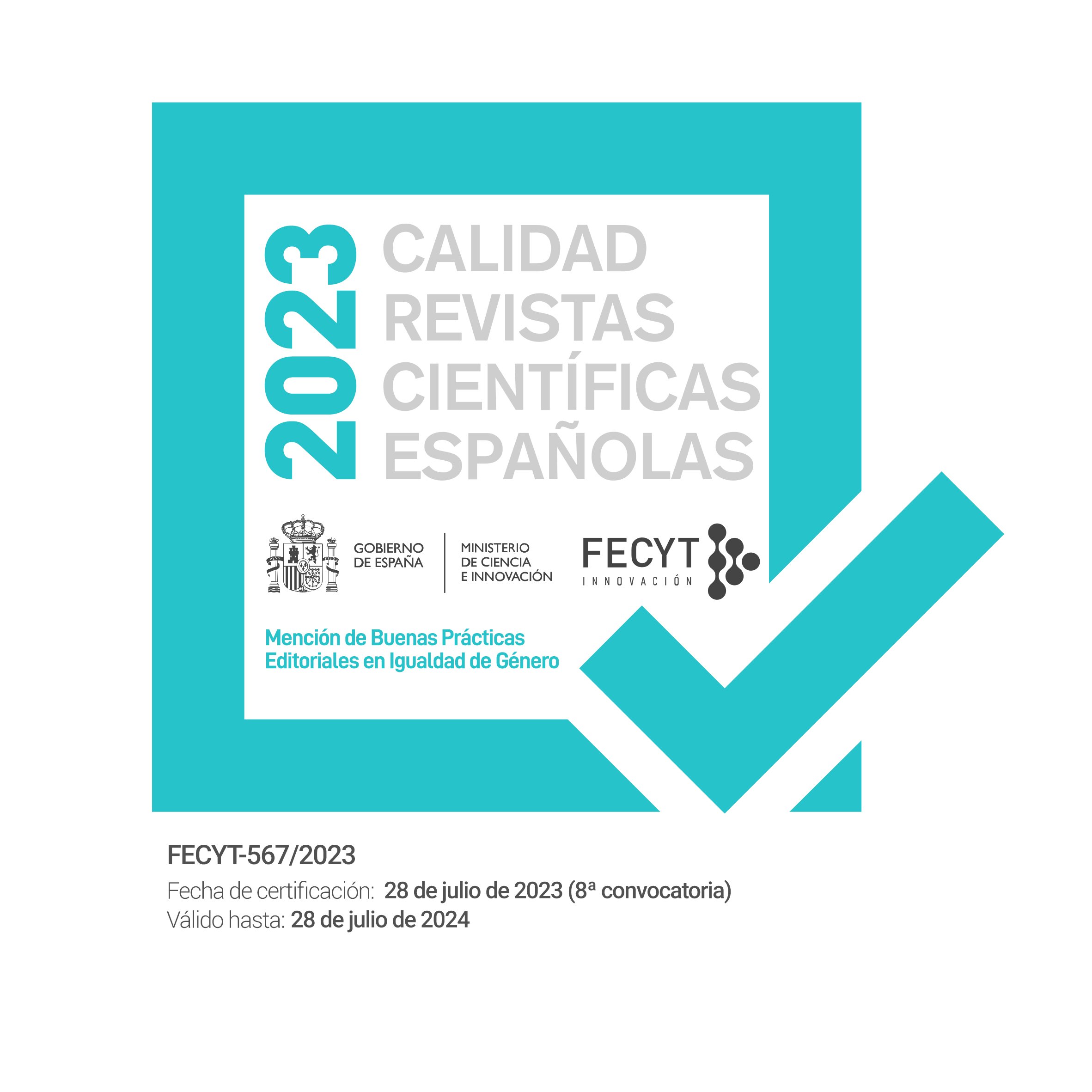La monstruosidad en la marça del escorpión, de Nancy Farmer
Palabras clave:
literatura infantil y juvenil, monstruosidad, neosubversión, neorrealismo, antiautoritarismoResumen
El fenómeno de la monstruosidad ha sido ampliamente explorado, en general, en las literaturas de todas las culturas y épocas; en particular, la literatura infantil y juvenil se ha beneficiado de la ominosa figura del monstruo, que permite a los jóvenes lectores identificar en este arquetipo los miedos reprimidos o inexpresados de su mundo íntimo. La novela juvenil contemporánea, sin duda, ha renovado la concepción de lo monstruoso para adaptarse a la mentalidad de su público lector y reflejar una realidad más compleja y profunda. La novela La marca del escorpión, de Nancy Farmer, renueva la imagen de lo monstruoso a través de la fusión de elementos clásicos del relato de ciencia-ficción con el néorrealismo y el antiautoritarismo, recursos neosubversivos de la literatura infantil y juvenil. En un paralelo interesante con Frankenstein, el joven protagonista de La marca del escorpión es estigmatizado a causa de su génesis “antinatural”, que lo ubica, desde el inicio, como un monstruo ante el mundo. La lucha de este personaje por defender su derecho a la vida lo confronta con las aberraciones de una sociedad consumista, decadente e inhumana, verdadera representación de lo monstruoso.
Descargas
Descargas
Publicado
Número
Sección
Licencia
Anuario de Investigación en Literatura Infantil y Juvenil se publica en acceso abierto desde 2019 (nº 17). Los autores mantienen el copyright, concediendo a la revista el derecho de primera publicación. Se permite el uso para fines docentes de los textos, datos e informaciones contenidos en estas páginas. Los autores pueden publicar su trabajo si indican que se publicó por primera vez en Anuario de Investigación en Literatura Infantil y Juvenil. Los derechos de autor de los números impresos (0-16) pertenecer a la revista.




 Anuario de Investigación en Literatura Infantil y Juvenil
Anuario de Investigación en Literatura Infantil y Juvenil